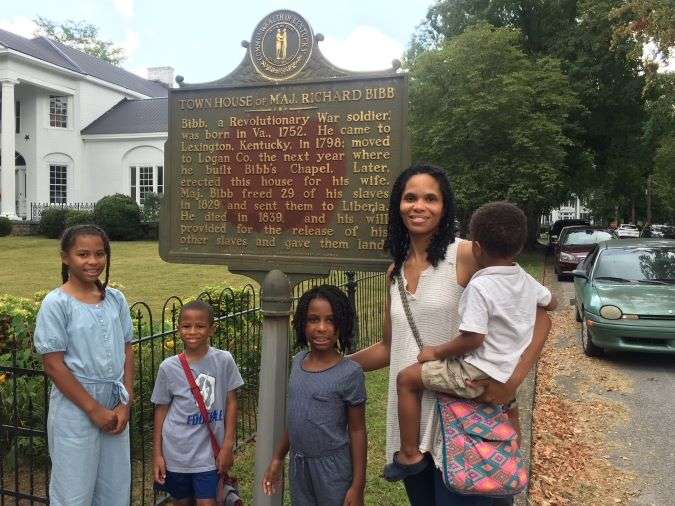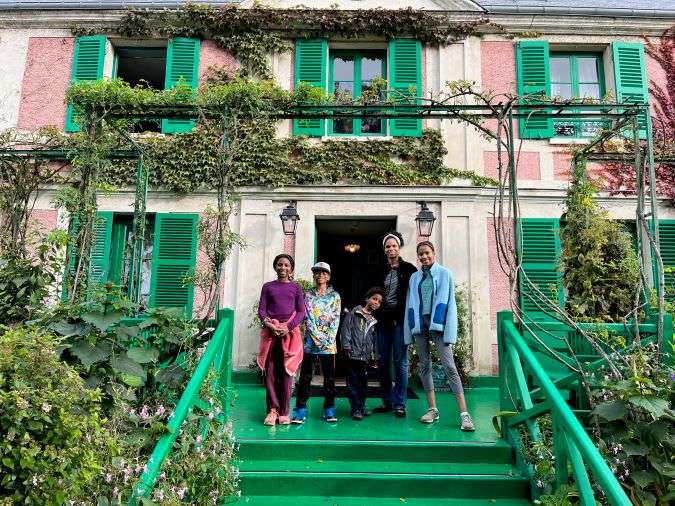Historic Homes: The Perfect Place for a Field Trip
Historic Homes: The Perfect Place for a Field Trip ~
Written by Amber O’ Neal Johnston
When my oldest daughter was very young, I didn’t regularly pursue opportunities to visit historic homes. In fact, it wasn’t on my radar at all. But eventually, our field trips became predictable and a bit stale as we repeatedly visited a limited number of places.
One afternoon, I picked up a flyer advertising a few historic homes in our area and decided to give them a try. I apprehensively took my little ones to the William Root House near us. This 1850s home offers a glimpse of life for an average family living in antebellum Georgia. We received a detailed tour of each room and the garden, and my entire family was fascinated.
My children engaged with the docents and asked questions during the tour and on the car ride home. They told my husband all about it as soon as he got home and eagerly looked forward to visiting another “old-fashioned” house.
Since that time, I’ve regularly incorporated visits to historic homes locally and across the country (and world) whenever our schedule and travels allow.
Sometimes I align the visits with the historical time period we happen to be studying and other times we just go wherever an opportunity presents itself. Either way, we always walk away with a greater understanding of the home and how the people inside may have lived.

If you’d like to incorporate historic homes into your field trip rotation, here are a few ideas to help you get the most from the experience:
1. Do a little research ahead of time.
Because of America’s history of slavery, many of our country’s preserved historic homes thrived under the forced labor of enslaved Black people. I understand why some families may want to avoid these properties, but many of these homes have done incredible work to include difficult and beautiful stories of enslaved people who endured on the land.
And there are also many African American historic homes in the U.S. and abroad where free Black people – famous and little-known – lived, and they’re fabulous places to visit.
If you aren’t sure about a particular home, check the website to get a sense of how they speak about the homeowners, the enslaved, and their intertwined stories. Call the site and ask about the tone of the tour and the details shared with visitors.
I’ve certainly visited places that need to do a much better job at honest storytelling, but most of the time, I’ve been pleasantly surprised.
2. Read a related book before (or after) visiting.
I enjoy pairing picture books and historical fiction novels with our historic home visits. Reading a story that takes place in the same time period as a historic home helps my family connect with what we see.
For example, when a tour guide pointed out a pie safe to my kids, they immediately turned to me and smiled because we’d just read a story that mentioned the same type of cupboard.
3. Ask questions about the preservation process.
When my children were younger, we would just soak up the stories shared within the historic homes, and that was more than enough. But now that I have a teen and tween (in addition to younger kiddos), we spend more time inquiring about the story behind the story.
We like to find out about architecture, which parts of the home and its furnishings are original, and what’s been done to preserve and protect the home.
4. Check out the National Register of Historic Places.
This is where I find leads on many of the historic homes that we’ve visited, especially the ones in other cities and states. Armed with this list and a few quick google searches, we’ve happened upon some of the most remarkable homes tucked away in unassuming places.
5. Revisit the same home.
This one may sound like a waste of time, but I assure you that revisiting the same home multiple times is a rich experience. The Swan House is a 1920s historic home in our area, and my kids have been so many times that I’m certain that they could lead a fabulous tour themselves.
We bought a membership to the larger property when they were younger, and we visited frequently because it was free and air-conditioned to beat the Georgia heat on days when I wanted to get them out of the house.
But as they explored and listened, they developed a relationship with the home and its stories, and that’s a gift that I never expected.
Exploring historic homes has given my family and I an added depth to our learning experiences and lives. I hope that you can share similar experiences with your family while touring historic homes. You will be glad you did!
What’s Your Homeschool Mom Personality? Take Jamie’s quiz now and receive a free personality report to help you organize your homeschool based on what your personality type needs most!


